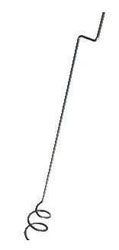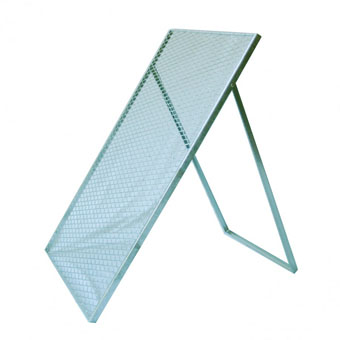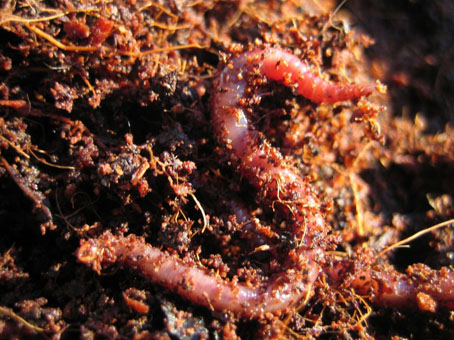Composting and Gardening Accessories

Compost Aerator
Consists of a metal rod with one end in a spiral form, similar to a giant corkscrew.
It is very simple to use. To aerate or toss the compostingmaterial, it is turned clockwise over the shaft so that it buries itself in the pile until you cannot see the spiral. Next it is rotated upwards at the same time as shaking the pile. It is a good idea to do this in each corner and in the middle about once a week.
Due to its ergonomic design, the compost aerator is more convenient than any other tool that you have used up until now for tossing the contents of your composter. That said, the contents should be suitably broken down.
The compost aerator is also very useful for removing compost samples from the composter’s core. To do this it is only necessary to bury the aerator to the required depth and bring it out vertically, without shaking it. Thus, we can obtain a sample of matter from the core of the pile, which permits us to check the compost’s state of maturity.

Bolsa Compostadores
Bolsa de gran resistencia, puedes utilizarla como almacén de hojas, para guardar el compost, etc.
Esta bolsa es el embalaje de nuestro producto y la recibirás gratuitamente con la compra de tu compostador o huerto urbano i jardinera.

Sieve 100/60
Stainless sieve useful when we collect the compost and we need to separate the twigs and other semi-finished debris from finished compost.
Recomendaciones
- Se apartan los restos de la parte superior que todavía no se han deshecho y se dejan en una carretilla o en el suelo.
- Si se quiere, antes de realizar el cribado se puede dejar secar el compost uno o dos días para que se filtre mejor.
- Los restos sin deshacer que se han apartado al principio se introducen de nuevo en el compostador junto con las partes más gruesas del compost que han quedado al otro lado de la criba.
- No hay que preocuparse por los organismos que aparecen desorientados por el suelo, ya que ellos mismos encontrarán el camino hacia el compostador y continuarán trabajando.

Red Worms
Each batch of worms contains samples of adult and young worms and eggs from the Eisenia Foetida species, known as the Californian Red Worm, originating from the Mediterranean basin. The red worms travel in a humus material which conserves the humidity and protects the worms from the light and too high or low temperatures.
